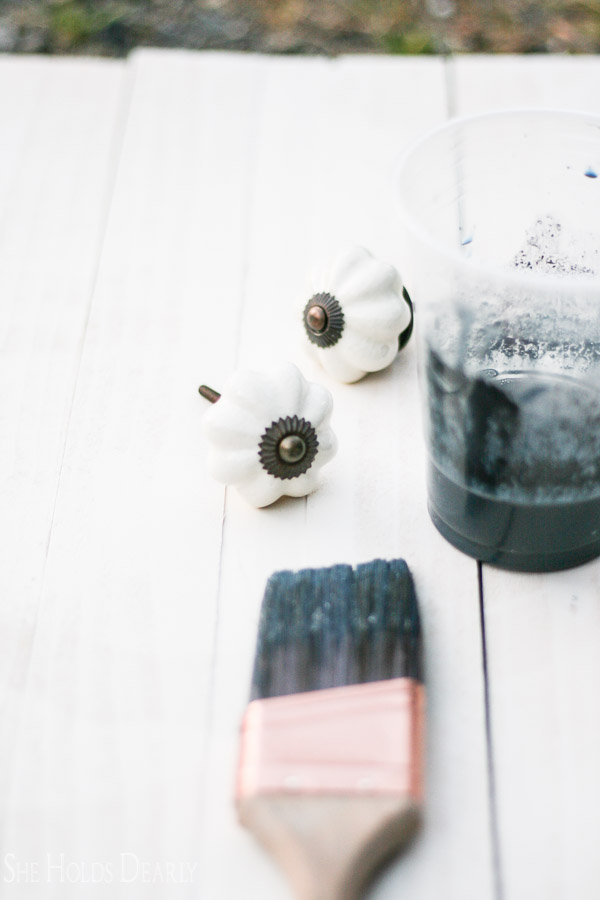The Pros and Cons of Milk Paint
If you have ever wanted to try milk paint, but weren’t sure about the pros and cons, let me walk you through the process!
I am by no means an expert, but I have used it enough to form some opinions of my own. It is my paint of choice for most projects.
Of course, nothing beats a can of spray paint sometimes!

This post contains affiliate links. Click here for a full disclosure.
But, if I am painting a piece of wood furniture, I reach for milk paint. I use the Miss Mustard Seed milk paint the most because of it’s beautiful color line.
First, lets go over the pros and cons and then I will share some of my recent projects.
The Pros:
- History- Milk paint is the oldest paint in the world. I’m talking, cave paintings and Egyptian tombs! It is a simple mixture of dried milk, pigments and lime. You can actually find recipes on Pinterest to make your own milk paint. There is just something about working with a product that is time tested and ancient that really appeals to me.
- All Natural- Because the paint is made with natural ingredients, it can be used on wooden toys and nursery furniture, etc. I don’t mind it getting on my skin or rinsing my brush in the kitchen sink.
- Water Based– If you have used milk paint before you know that it usually comes in a powder form. You have to add water and get the powder to mix in really well. It is simple to clean up and I have even gotten it out of my good jeans, that one time I was rushing and didn’t change into my painting clothes!
- Minimal Prep- Just a light cleaning and sanding will do for most pieces.
- Artistic Finish– This final point is the main reason I love it the most. Usually, you will need two to three coats of milk paint. You will sand in between coats and finish with a wax or oil. Because there are tiny pigments in the paint, when you sand little streaks of different colors show up, giving it an almost iridescent finish. It is also famous for its tendency to randomly chip and flake giving it that time worn look.
When I used two different colors (first coat-flow blue and second coat-artissimo) on this dresser and then sanded some place down more than others, the pigments really made an impact!

The Cons:
- Expensive- A little on the expensive side, but it does go a long way. I only needed one package of milk paint for my entire piano.
- Needs to be Mixed – I recommend a tiny hand mixer for this. You are going for the consistency of pancake batter. And, really, its kind of hard to screw up, you can keep adding water or paint powder, as needed.
- Needs to be Sealed- It is an extra step, but it really brings the piece to life and makes it really durable. My favorites are the white, clear or dark finishing waxes.
- Doesn’t do Well on Veneer- Milk paint’s “chippy” quality goes overboard on veneer, so if that is going to bother you, I suggest trying chalk paint instead.
Some of My Milk Paint Projects:
My first project.
Yes, I paint out on this one stump in my front yard.

That nautical dresser I sold on Craigslist to a sweet little, teenager who was giving her room a makeover.

Ikea stool in kitchen, love, love, love.

And my latest, my grandparents’ piano.


Pin the Pros & Cons of Milk Paint for Later:

